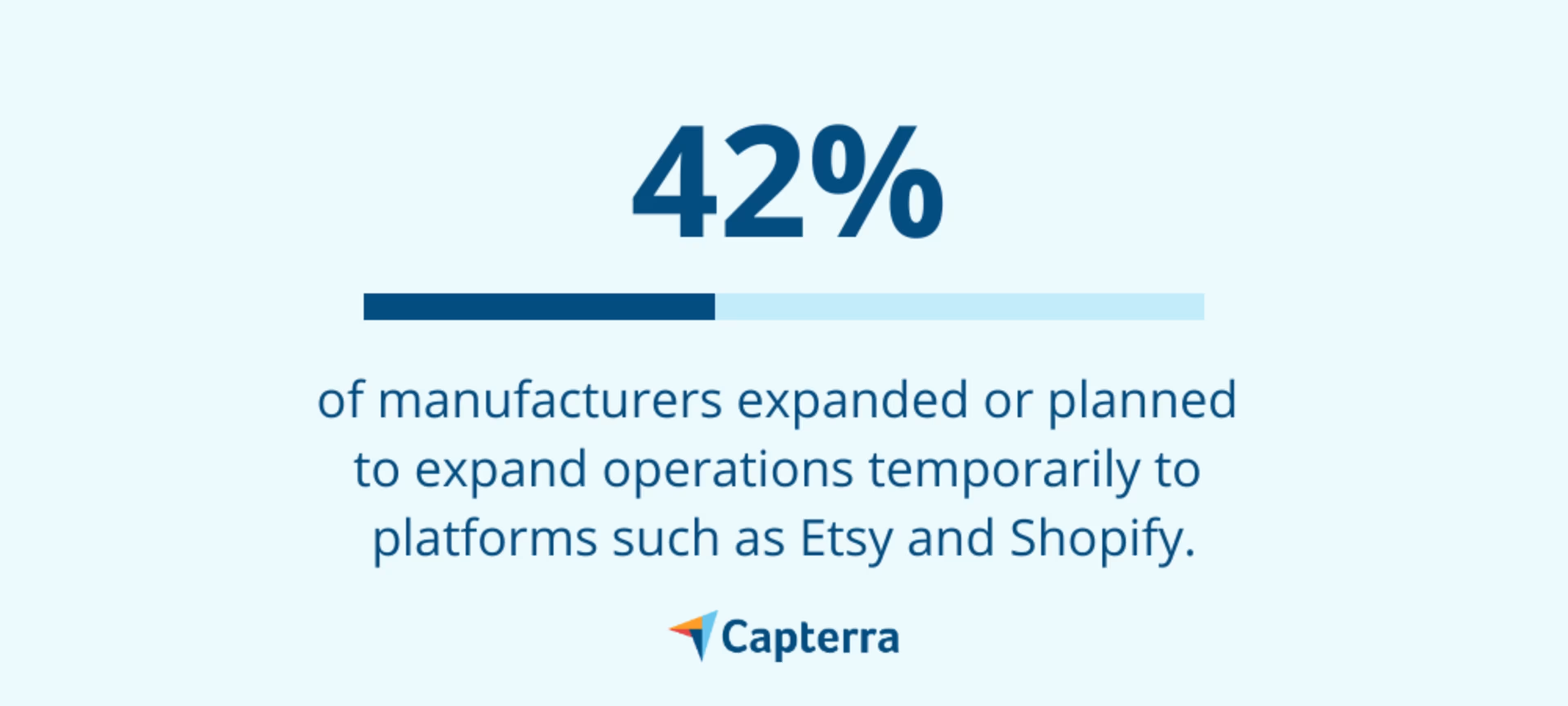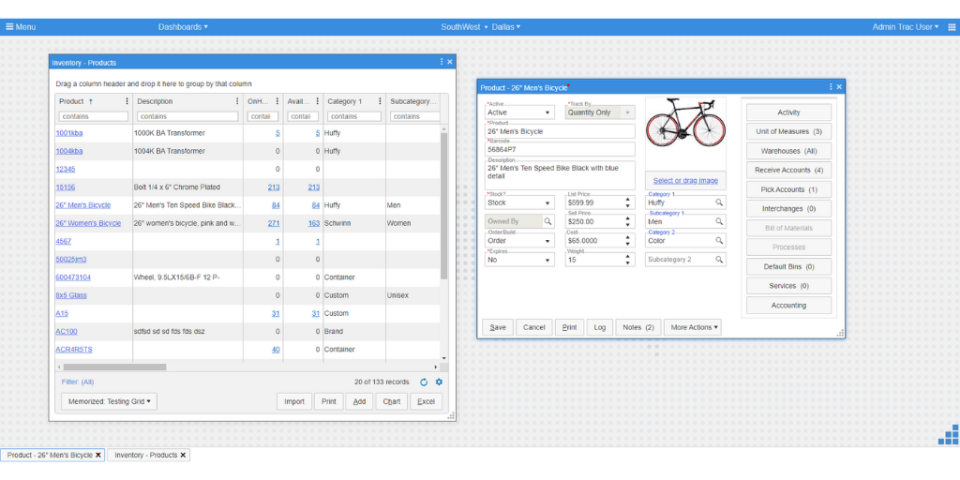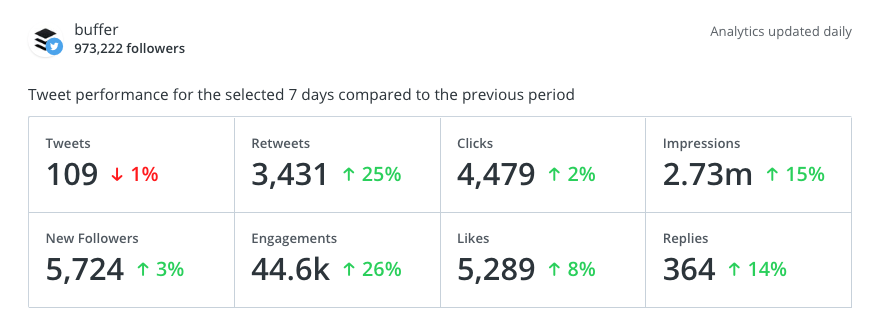Instead of continuing to sell to businesses, manufacturers had to figure out how to directly reach consumers when the pandemic hit. Software helped them do it.

Prior to the pandemic, Armandas Tiskevicius’ business, Mezzoroni, was a B2B tailoring company, sewing clothing for Lithuanian government agencies and other businesses. When the clothing industry began closing down, Tiskevicius knew Mezzoroni wouldn’t survive long.
“For a few months, we just waited and discussed what we thought the outcome of the coronavirus situation would be,” Tiskevicius said. “But clients kept dropping off.”
As demand for B2B tailoring services decreased, Tiskevicius saw an opportunity: Instead of selling to businesses, why not sell directly to consumers?
According to a recent survey, other businesses have had a similar idea: 42% of manufacturers expanded or planned to expand operations temporarily to selling platforms.

3 tips to help manufacturers start selling directly to consumers
Tiskevicius took inventory of the resources available to his business and capitalized on the skills his team already possessed. As a result, he decided to launch a clothing line, using platforms such as Etsy and Shopify to start.
Here are some things he did to make the transition from B2B to B2C that you can apply to your own business if you’re making a similar transition.
1. Stick with what you already do well
Tiskevicius didn’t completely reinvent his business—he just honed in on its strengths. In his case, his business specialized in making clothing for businesses, which could be adapted to making clothing for consumers.
He chose linen as the material because Lithuania (where he is based) is known for its high-quality linen, and his employees were used to working with the fabric, having made linen clothing for a business in the past.
Although Tiskevicius chose a readily accessible material, there were many other challenges involved in launching his clothing business, especially involving supply chain logistics.
“Now, we have to deal with the supply chain, like getting zippers and buttons, whereas before, all of these materials were provided,” Tiskevicius said. “Now, we have to make connections and get [these items] ourselves.”
Like Mezzoroni, even if you stick with something familiar, you may find it difficult to navigate a new supply chain when transitioning from B2B to B2C. But you don't have to do it all on your own. Supply chain management software can help you automate processes, process orders, and keep track of warehouse supplies.

Supply chain management software Flowtrac allows users to manage inventory (Source)
What you can do
Pivoting your business doesn’t mean starting from scratch. Consider what strengths your business already has and go from there. You can also learn what other businesses are doing to pivot during the crisis, and apply some of their strategies to your own business.
2. Leverage software to help you get started
If you’re changing your business model, chances are you’ll need software to get the job done. You might need new software or be able to use software you already have in a different way. For Tiskevicius, it was a combination of new and old tools.
Some of the main tools he started using were Etsy and Shopify to host his online store and showcase his products. He said that setting up the Etsy shop took minutes but Shopify took a little longer because they had to build a website. Eventually, his goal is to move away from these platforms once they have an established customer base and move everything to the website.
One of the most important decisions you’ll make when selling directly to consumers is your distribution channel. Some businesses choose third-party platforms like Etsy and Amazon, which typically offer the ability to list products quickly and easily. However, long-term, you may have to pay listing fees and find yourself limited in how much traffic you can funnel to your product pages.
Conversely, eCommerce software can help you set up a selling channel on your website. While this might take more time upfront, you’ll have more control over your online business in the long run.
Tiskevicius also uses web analytics software to track metrics such as traffic.

Google Analytics, a web analytics software solution, offers users a dashboard view of metrics they want to track (Source)
What you can do
Think about your challenges and what software exists that can help you. If you need a selling platform, start with eCommerce software. If you need a website, check out website builder software. With so many solutions, the perfect fit for your business is out there.
3. Use social media to connect with your new audience
Another major challenge Tiskevicius faced when moving away from the B2B space and into B2C was marketing. Tiskevicius and his team had to figure out who their new audience was, and how they would reach them.
Ultimately, based on the style of clothing and the brand’s emphasis on sustainability, they defined their target audience as women between the ages of 25-45. After they figured out the who, they had to figure out how to reach them. So, they turned to social media.
Through social media, Tiskevicius and his team are able to connect with their target audience, advertise the brand, and—ultimately—attract buyers. With social media management software, you can take your social media strategy to the next level by tracking metrics such as engagement.

Buffer shows users how their social media pages are performing (Source)
What you can do
If you’re starting social media marketing from scratch and can afford one, it might be a good idea to hire a social media point person. Don't worry if you don't have the budget, though; it's more than possible to manage on your own. Social media management software can help you schedule and track posts.
Software makes business pivots easier
Pivoting is no easy task and can feel daunting—but it’s still possible. If you’re thinking your business needs an overhaul, a good place to start is looking at other businesses that have made similar pivots and how they're using technology to succeed.
Once you have a direction, software can help you take the next step and streamline new and old processes.